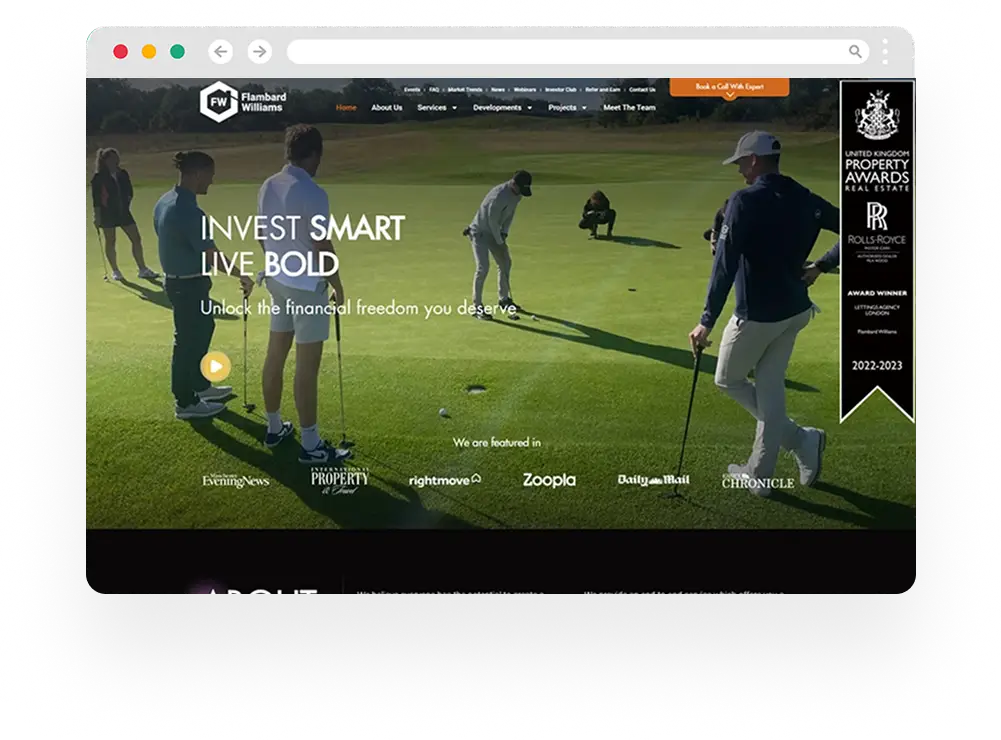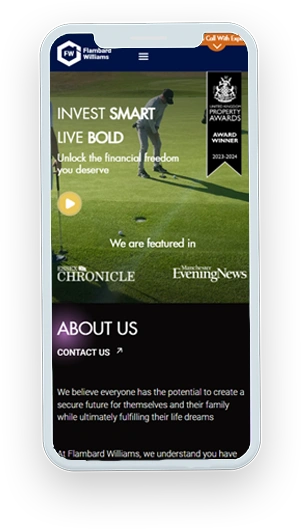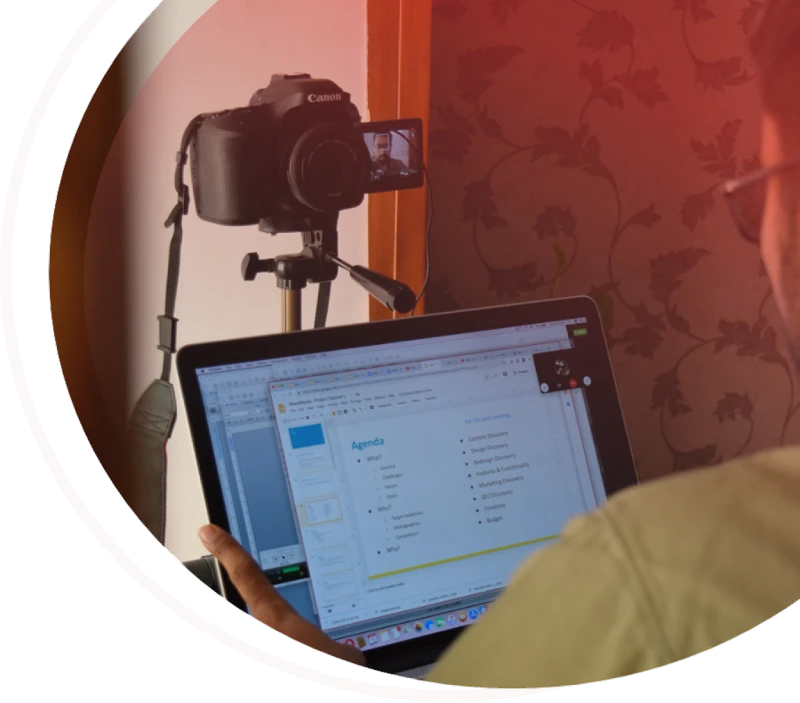The Role of Storytelling in Real Estate Lead Generation and Client Retention


Role of Storytelling in Real Estate Lead Generation and Client Retention
Table of Contents
Serious about growing your business? Let’s plan exactly how to get you more leads, sales, and results—faster.
Let’s be honest—most real estate marketing sounds the same. “Luxurious 3BHK,” “prime location,” “modern amenities”… you’ve seen it all before. The problem? It doesn’t feel like anything.
Yet, here’s the thing no one tells you: people don’t just buy properties—they buy dreams, futures, and identities. In fact, according to research by the National Association of Realtors, homebuyers make emotionally-driven decisions first, then rationalise them with data later.
That’s why storytelling is so powerful. It’s the missing piece between your marketing and your next client.
Most real estate businesses go heavy on logic—square footage, price per sq ft, ROI. All valid. But if you don’t also speak to the heart, you’re leaving money on the table. People don’t remember the specs; they remember how something made them feel.
So here’s our thesis for this entire piece:
Storytelling bridges the gap between logic and emotion. It captures attention, builds trust, and turns one-time buyers into lifelong advocates.
- How to write emotionally-driven copy that goes beyond specs and speaks to what your buyers actually care about
- How to use storytelling to attract leads who feel connected to your brand from day one
- How to retain clients and turn them into loyal advocates by weaving narratives that resonate long after the sale
You’ll also see how we helped real estate brands achieve remarkable results—without ad fatigue —just by using powerful storytelling that connects on a human level.
So, let’s break it down.
Marketing Research & Strategy
We help you understand your market and build smart strategies to attract more customers and grow faster.
- Detailed research into your competitors, customers, and market
- Custom marketing and growth plans that drive real results
- Clear action steps to increase traffic, leads, and sales

ADWORDS ROI
Cut Ad spend

Results with a Strong Storytelling Strategy
- Conversion rate jumped from 5% to 28%
- Monthly leads surged from 33 to 1,080
- Revenue skyrocketed from £600/month to over £136,000/month
- ROI exploded from 396% to 1,600%+
These results are massive, right?
Honestly, when we first pulled these numbers, we had to double-check them.
Actually, triple-check 😉
These weren’t projections or best-case hypotheticals. These were real, verifiable results from a UK-based real estate company we worked with recently.
And the best part?
We didn’t overhaul their entire business.
We didn’t throw money at ads.
We simply reshaped their narrative.
We led with storytelling — not just once, but across every touchpoint:
Property Listings, Testimonials, Messaging Statement, Mission, Vision, Core Values, & Landing page copy
Then, we were able to offer these results to the client.
You see, no fluff here.
It’s completely the power of the story, strategically done.
234% more ROI, this is how we helped a real estate broker improve their bottomline.
The Psychology of Storytelling in Real Estate
Buying a home—or even investing in one—isn’t just a transaction. It’s a milestone. A personal leap. For many, it’s the physical proof of “I made it” or “I’m finally ready to start that next chapter.”
And here’s where it gets interesting: neuroscience backs this up.
Princeton University neuroscientists Greg Stephens and Uri Hasson, in the July 27 Proceedings of the National Academy of Science, wrote that, when someone hears a story, it lights up the same areas of the brain as if they were experiencing it themselves. It’s called neural coupling. Translation? A good story lets potential buyers see themselves living there, before they’ve even booked a viewing.
“Spacious 3-bedroom apartment with modern kitchen and ample storage.”
It tells you what it is—but not why you should care.
“Morgan had always dreamed of a spacious, beautiful home. Last year, that dream came true when she moved into a bright, modern three-bedroom apartment. These days, her mornings start with a strong black coffee in the sunlit, modern streamlined kitchen — and end with everything neatly in its place, thanks to the smart, generous storage that keeps clutter out of sight and peace of mind intact.”
Which one makes you want to book a visit?
Specs are important, but stories make them stick. The right narrative can turn a property from a pile of bricks into someone’s sanctuary, status symbol, or retirement dream.
And that’s where the magic really begins.
Storytelling for Lead Generation: Capturing Attention and Sparking Desire
Generating leads in real estate isn’t just about being seen—it’s about being remembered. And in a world of endless listings, cookie-cutter websites, and tired marketing templates, it’s your story that cuts through the noise.
Let’s explore how to use storytelling not just to attract leads, but to pull them in emotionally.
A. Transforming Listings into Lifestyle Narratives
Let’s start with the obvious: your property listings. Most of them are functional at best and painfully dull at worst.
“3BHK, 2 bathrooms, 1,200 sq ft, close to schools.”
Cool. That’s information. But where’s the imagination?
Now picture this:
“When Alice and Jack started looking for a new place, they weren’t just searching for walls and a roof — they wanted a space to grow as a family. The 3BHK apartment they found was exactly that: 1,200 square feet of comfort, with two bathrooms to make mornings smoother, and just a short walk from the kids’ school. It wasn’t just convenient — it felt like home from day one.”
Same property. Wildly different feel.
When you write listings as lifestyle narratives, you don’t just inform—you invite. You show buyers what life could look like. This is where emotion takes the lead, and logic happily follows.
Pro tip: Think of your ideal buyer. What do they want their life to feel like? Write to that, not just to the square footage.
B. The Power of Visual Storytelling
Words are powerful—but visuals seal the deal. A compelling photo, a walk-through video, a short narrated tour on Instagram—these all tell a story without saying a word.
A static image of a kitchen? Fine.
But a short video that shows someone pouring wine while the sun sets through the window? That’s a vibe.
Visual storytelling isn’t just about showing the property—it’s about setting a scene, creating a moment, painting a feeling. Platforms like Instagram Reels, Facebook Live, and even drone footage aren’t just cool add-ons.
They’re storytelling tools. And in today’s scroll-fast-or-forget world, they matter more than ever.
Use voiceovers, background music, and movement to bring the space to life. Because when people feel like they’re already there, leads convert faster—and with less friction.
C. Real Client Stories and Testimonials That Sell
Let’s be real: most testimonials are boring.
“Great service, very happy with the result. Highly recommend.”
Helpful? Barely.
What actually sells? Emotion-driven mini-stories.
“I was terrified of buying my first home—until I met the team at (your company name). They didn’t just guide me through the process, they helped me believe I could do it. Now I’m waking up in my dream home. And it still feels surreal.”
See the difference?
When past clients share their real journeys—the ups, the doubts, the win at the end—it doesn’t just act as social proof. It creates emotional relatability. New leads see themselves in those stories. That’s where trust begins.
Better yet? Capture these on video or audio. Let their voices bring the story to life. Your next client might just be one “me too” moment away.
D. Call-to-Actions With a Narrative Twist
Most CTAs are direct, but dry.
- Book a viewing
- Get in touch
- Schedule a call
They work—but they don’t inspire.
Try adding a little storytelling flair:
- See How We Helped Investors Scale to 50+ Units
- Secure Your Next 5-Figure Deal — Before Someone Else Does
- Invest with confidence – schedule your 1-to-1 strategy session
See the shift?
Your CTAs should feel like the natural next scene in a story your audience already wants to live. Not a sales pitch—an invitation
Also READ: The UK Real Estate SEO Blueprint How to Rank #1 on Google & Generate Free Leads
Storytelling for Client Retention: Turning Clients into Advocates
We all know getting a client is one thing. Keeping them loyal, engaged, and eager to refer you to their network? That’s a whole different game.
And guess what? Storytelling still plays a central role.
Because people don’t remember the handshake at the end—they remember how you made them feel throughout the experience. Let’s explore how to turn satisfied clients into loyal storytellers.
A. Emotional Anchoring After the Sale
Most real estate professionals drop the ball after the deal closes. A polite thank you message, maybe a housewarming gift… and then radio silence.
But what if you kept the emotional connection alive?
Imagine sending a follow-up email a month later that doesn’t just ask for feedback, but reminds them of their journey:
“It’s been 30 days since you stepped into the home you once only dreamed of. Remember when we walked through that front door and you said, ‘This is the one’? Just checking in to see how the first month of this new chapter is unfolding.”
That’s emotional anchoring. You’re not just selling them a house—you’re reinforcing that they made a great life decision.
This isn’t manipulation. It’s memory-making. It helps turn a transaction into a transformation.
And the best part? When they feel emotionally connected to you after the sale, they’re far more likely to recommend you to others.
B. Creating a Feedback Loop Through Story
Well, feedback forms and surveys can feel cold.
But what if you turned them into story prompts?
Instead of asking, “How would you rate your experience from 1 to 5?” try:
- Was there a moment in the journey where you felt truly cared for?
- What’s one challenge we helped you overcome?
- How would you tell your home-buying story to a friend?
This approach does two things:
- It gives you real, textured insight into your process.
- It makes your clients feel heard, valued, and seen.
And when you use their feedback to refine your messaging, tweak your service, or spotlight their experience, they notice. That’s how you close the loop and keep the story going.
Also READ: This One Mistake Is Costing You 70% of Quality Leads
Digital Marketing, SEO & PPC
- SEO to boost rankings and capture high-intent, AI-driven traffic
- Performance Marketing to run ROI-focused campaigns that convert
- Content Marketing to drive clicks, earn links, and build authority

Storytelling Across Platforms
Not all stories should be told the same way everywhere.
What works as a 3-minute YouTube story might fall flat on LinkedIn. A heartfelt client journey may thrive in your newsletter, but need to be snappier for Instagram.
The key is platform intelligence: knowing how your audience consumes content in different places and tailoring your story format accordingly.
Here’s how you can think about it:
- Instagram Reels & Stories – Visual snippets, lifestyle moments, before-and-after transformations
- LinkedIn Posts – Thought leadership, market insights, lessons from client experiences
- Email Newsletters – Behind-the-scenes narratives, personal reflections, post-sale follow-ups
- YouTube Videos – Deep-dive property journeys, client interviews, origin stories
- Blog Articles – Educational narratives with SEO baked in (“How the Sharma Family Found Their Forever Home—And What It Teaches Us About Buying Smart”)
Strategic Content Creation: Marrying Emotion and Information
The medium may change, but the core story remains the same. It’s not about repeating yourself—it’s about reframing your message for maximum impact.
Storytelling doesn’t mean ignoring facts. It means wrapping your facts in meaning.
Imagine this:
“90% of homes in this project sold within 3 months.”
vs.
“When Aston & his family visited this project last summer, they were drawn to the same peaceful corner unit that’s become our best-seller. And they weren’t alone—90% of homes here were sold in just 3 months. Turns out, when people find their perfect fit, they act fast.”
The second version still delivers the stat, but it anchors it in a real story. It gives context. It’s human.
That’s the balance to aim for—don’t just drop facts. Frame them.
Because people don’t remember raw data—they remember how that data made them feel.
To wrap it up…
At the end of the day, real estate isn’t just about bricks and mortar. It’s about people’s lives, their dreams, and the memories they’re ready to create.
Storytelling is the secret sauce that connects the dots between what buyers want and what you offer, turning browsers into buyers and clients into lifelong advocates.
When you tell stories that resonate emotionally and back them up with solid information, you don’t just sell properties—you build trust, loyalty, and a brand that people remember and recommend.
If you’re ready to stop competing on price and specs alone and start leading with stories that truly connect, then it’s time to make storytelling the heart of your real estate marketing.
Ready to tell your story in a way that drives real results?
Schedule a 1-hour free strategy session with our content strategists. Let’s craft your unique narrative and watch your leads and loyalty soar.




